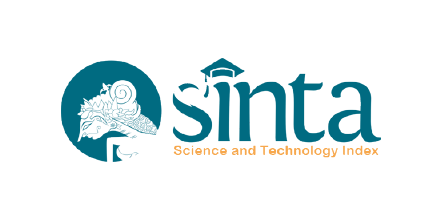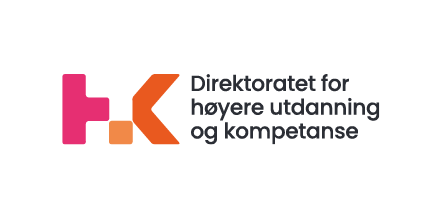Positive Meaning: The Typical Coping of Resilient Person Towards Changing Conditions Become Individual with Disability
DOI:
https://doi.org/10.21776/ub.ijds.2018.5.2.2Keywords:
Positive meaning, coping, resilience, individual with disabilityAbstract
Previous research (Hendriani, Retnowati, and Koesbardiati, 2011) has found that coping is the mechanism that determines adaptation and attainment of individual resilience in changing conditions become persons with disabilities. Among the active coping sequences identified, the individual's positive meaning of crithical events raises a motivational effect and reinforces the individual to be able to adapt to new life as a person with a disability. This study aimed to follow up the findings by exploring deeper positive meaning of participants who meet resilient criteria. A qualitative phenomenological approach was used to achieve that goal. The study participants were four of eight individuals with disability that also participated in the previous research (Hendriani, Retnowati, dan Koesbardiati, 2011). Researchers used in-depth interviews to extract data, and analyzed them with interpretive phenomenological analysis techniques. The results showed that each participant has a typical positive meaning to the event that made them experience disability. The meaning raises the other positive coping strategies that enable the individual to rise from significant psychological pressure, accept the disability and become empowered.References
Baumeister, R.F. (1991). Meanings of life. New York: The Guilford Press.
Becker, G., and Newsom, E. (2005). Resilience in the face of serious illness among chronically ill african americans in later life. The Journals of Gerontology, 60B(4), S214-S233.
Charmaz, K. (1991). Good days, bad days: The self in chronic illness and time. New Jersey: Rutgers University Press.
Cohen, R.M. (2008). Strong at the broken places: Voices of illness, a chorus of hope. Diakses dari http://www.harpercollins.com.au/books.
Franke, J. (1999). Stress, burnout, and addiction. Texas Medicine, 95 (3): 43-52, 1999. Diakses dari http://www.texmed.org/Template.aspx?id=4479.
Goulding, C. (1999). Grounded theory: Some reflections on paradigm, procedures, and misconception. Telford: Management Research Centre, Wolverhampton Business School.
Heath, H., and Cowley, S. (2002). Developing a grounded theory approach: A comparison of glaser and strauss. International Journal of Nursing Studies 41 (2004), 141-150. Diakses dari www.sciencedirect.com.
Hendriani, W., Retnowati, S., dan Koesbardiati, T. (2011). Proses resiliensi individu dalam perubahan kondisi fisik menjadi penyandang disabilitas. Jurnal Psikologi Indonesia, 2011, Vol. VIII, No. 2, 72-83.
Huang, M. (2009). Resilience in chronic disease: The relationships among risk factors, protective factors, adaptive outcomes, and the level of resilience in adults with diabetes. Queensland: Queensland University of Technology, Institute of Health and Biomedical Inovation.
Kahija, Y.F.L. (2017). Penelitian fenomenologis, jalan memahami pengalaman hidup. Yogyakarta: Penerbit PT Kanisius.
Kalil, A. (2003). Family resilience and good child outcomes. Wellington: Ministry of Social Development.
Lazarus, R.S., and Folkman, S. (1984). Stress, appraisal, and coping. New York: Springer.
Luthar, S.S. (2003). Resilience and vulnerability, adaptation in the context of childhood adversities. Cambridge: Cambridge University Press.
MacArthur, J.D., and MacArthur, C.T. (1999). Coping Strategies. UCSF. (Online). Diakses dari http://www.macses.ucsf.edu/Research/Psychosocial/notebook/coping.html. Retrieved 06/11/2008.
Meichenbaum, D. (2008). Bolstering resilience: Benefiting from lesson learned. Diakses dari www.melissainstitute.org.
Richardson, G. E. (2002). The metatheory of resilience and resiliency. Journal of Clinical Psychology, 58(3), 307-321.
Sturgeon, J.A., and Zautra, A.J. (2010). Resilience: A new paradigm for adaptation to chronic pain. Current Pain and Headache Reports, Vol. 14, No. 2, 105-112. http://www.springerlink.com.
Tarsidi, D. (2008). Model konseling rehabilitasi bagi individu tunanetra dewasa (Dikembangkan berdasarkan studi kasus terhadap individu tunanetra dewasa yang berhasil). Disertasi (Tidak Diterbitkan). Bandung: Sekolah Pasca Sarjana Universitas Pendidikan Indonesia.
Tjiptadi, B. (1984). Tata Bahasa Indonesia. Cetakan II. Jakarta: Yudistira.
Tugade, M.M., and Fredricson, B.L. (2004). Resilient individuals use positive emotions to bounce back from negative emotional experiences. Journal of Personality and Social Psychology, Vol 86, No.2, 320-333.
Zautra, A.J.., Johnson, L.M., and Davis, M.C. (2005). Positive affect as a source of resilience for women in chronic pain. Journal of Consulting and Clinical Psychology, 73 (2), 212-220.
VanBreda, A.D. (2001). Resilience theory: A literature review. Pretoria: South African Military Health Service, Military Psychological Institute, Social Work Research and Development.
Downloads
Published
How to Cite
Issue
Section
License
Copyright (c) 2018 Wiwin Hendriani

This work is licensed under a Creative Commons Attribution-NonCommercial 4.0 International License.















